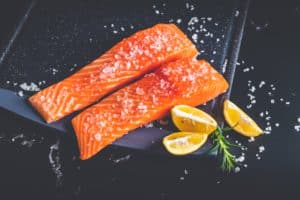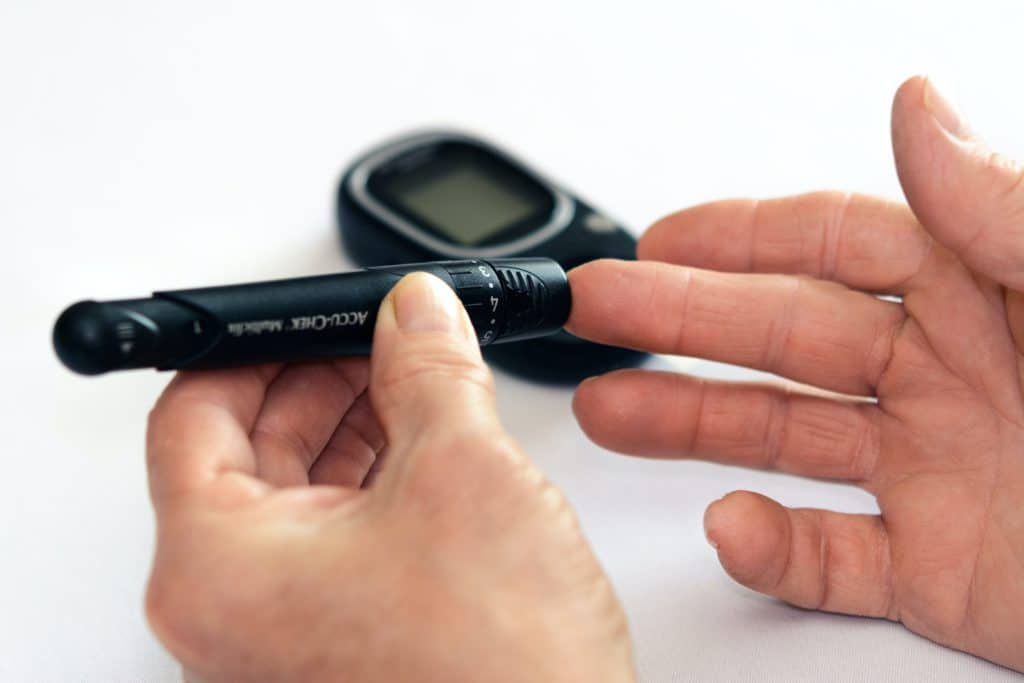
INTRO
What is fasting?

Fasting has traditionally been practiced by various religions and has been used for spiritual and health reasons for centuries. Due to its health benefits, intermittent fasting for non-religious reasons has increased in popularity in recent years.
Intermittent fasting is a pattern of eating that involves periods of fasting, followed by periods of non-fasting. Some people practice intermittent fasting as a way to lose weight, while others do it for its potential health benefits, such as improving insulin sensitivity, reducing inflammation, and potentially increasing lifespan.
Starting an fasting challenge and inviting friends who might be interested in joining is a great way to stay motivated and encouraged to stick to your health goals, together!
Health Benefits of Fasting
There is some evidence to suggest that intermittent fasting may have a number of health benefits. Here are a few examples of the results you might see from intermittent fasting.
Weight loss
Intermittent fasting may help with weight loss by reducing overall calorie intake. By restricting food intake for certain periods of time, you may naturally consume fewer calories overall.

Improved insulin sensitivity
Intermittent fasting has been shown to improve insulin sensitivity, which can help to lower the risk of type 2 diabetes.
Reduced inflammation
Some studies have found that intermittent fasting may reduce inflammation in the body, which is believed to play a role in a number of chronic diseases.
Increased lifespan
Some research suggests that intermittent fasting may increase lifespan by activating cellular repair processes and protecting against age-related diseases.
Planning Your Fast

There are a few key elements to consider when it comes to intermittent fasting:
Fasting period. The length of the fasting period will vary depending on the specific method of intermittent fasting that you are following. Some methods involve shorter fasting periods of 12-16 hours, while others involve longer periods of 24-36 hours.
Eating window. During the non-fasting period, also known as the eating window, it is important to focus on nourishing your body with healthy, balanced meals. This means including a variety of protein, fiber, and nutrient-dense foods in your diet.
Hydration. It is important to stay hydrated during the fasting period, as well as during the eating window. Water, as well as other non-caloric beverages such as herbal tea, can help to keep you hydrated and support healthy digestion.
Exercise. Regular physical activity can be an important part of a healthy lifestyle, and this is also true when it comes to intermittent fasting. Engaging in regular physical activity, like lunges or jump rope, can help to support weight loss, improve insulin sensitivity, and reduce the risk of chronic diseases.
By considering these elements and finding a method of intermittent fasting that works for you, you can potentially reap the health benefits of this eating pattern.

Different Types of Fasting
There are several different, common ways to practice intermittent fasting. Here are a few examples:
16/8 method
The 16/8 method is an intermittent fast that involves fasting for 16 hours and then eating during an 8-hour window. For example, you may choose to skip breakfast and only eat during your lunch and dinner meals.
5:2 diet
The 5:2 diet involves eating normally for 5 days and restricting calorie intake to 500-600 calories on the other 2 non-consecutive days.
Eat-Stop-Eat
This method involves a 24-hour fast one or two times per week.
Alternate day fasting
With this intermittent fasting method, you fast every other day, eating normally on non-fasting days and restricting calorie intake to 20-25% of your usual intake on fasting days.
One meal a day (OMAD)
As the name suggests, this method involves eating only one meal per day, typically in the evening.
Starting a Fasting Challenge
1
Start slowly
If you’re new to intermittent fasting, it may be helpful to start with a shorter fasting period, such as the 12/12 method (fasting for 12 hours and eating during a 12-hour window). As you become more comfortable with the practice, you can gradually increase the length of your fasting period.
2
Choose a method that works for you
There are several different ways to practice intermittent fasting, so it’s important to find a method that works for you and your lifestyle. For example, if you’re not a morning person, the 16/8 method may be a good fit, as it allows you to sleep in and have your first meal later in the day.
3
Make it a part of your routine
Incorporating intermittent fasting into your routine can help to make it a habit. Consider setting aside specific times for fasting and eating, and try to stick to the same schedule each day.
4
Find an accountability buddy
Having someone join you in your fasting challenge can help to keep you motivated to stay away from food and stick to your goals.
5
Be consistent
To build a habit, it’s important to be consistent. Aim to practice intermittent fasting on a regular basis, rather than sporadic intervals.
Supporting Your Fast

Building a habit takes time, and it’s normal to experience setbacks along the way. If you slip up, don’t get discouraged – just get back on track and continue working towards your goal.
There are several common setbacks and obstacles that can make it difficult to stick to a plan of intermittent fasting. Here are a few strategies you can try to overcome these setbacks:

Hunger. Hunger is a common challenge when it comes to intermittent fasting, especially during the initial adjustment period. To help manage hunger during the fasting period, it can be helpful to drink plenty of water, and to focus on high-fiber and protein-rich foods during the eating window.
Social situations. It can be difficult to stick to a fasting plan when you’re surrounded by food, especially if you’re eating with friends or family. If you’re worried about social situations, consider bringing your own protein-rich snacks or meals to share, or plan to eat beforehand or after the event.
Travel. Travel can make it difficult to stick to a regular eating schedule, but it is still possible to practice intermittent fasting while on the go. Consider packing healthy, portable snacks to help you stay on track, and try to find a method of intermittent fasting that works with your travel schedule.
Lack of motivation. It’s normal to experience a lack of motivation from time to time, especially when you’re trying to build a new habit. If you’re feeling unmotivated, try to remind yourself of your reasons for practicing intermittent fasting, and consider enlisting the support of a friend or family member to help keep you on track.
By being proactive and finding solutions to these common setbacks, you can overcome them and stick to a plan of intermittent fasting.
Fasting Challenge FAQ's
Yes, drinking water is absolutely recommended during fasting. In fact, water is the most important drink to have during fasting to avoid dehydration and maintain normal bodily functions.
It is essential to stay hydrated, especially during longer periods of fasting, as the body continues to lose water through normal processes such as breathing, sweating, and urination.
Drinking water also helps to promote feelings of fullness, which can help to reduce hunger pangs and make the fasting period more manageable. So, be sure to drink plenty of water while fasting to stay hydrated and healthy.
During intermittent fasting, you should only consume calorie-free beverages, like water, tea, coffee, and other non-caloric beverages, to avoid breaking your fast.
Here’s a breakdown of some commonly consumed beverages during intermittent fasting:
Water. The most important beverage to consume during intermittent fasting is water. You should drink plenty of water throughout the day to stay hydrated.
Black coffee. Black coffee is calorie-free and can be consumed during your fasting period, but be sure to avoid adding any milk, cream, sugar, or other sweeteners as they will break your fast.
Tea. Most herbal teas are also calorie-free and can be consumed during your fasting period. However, be careful with fruit-flavored teas, which may contain sugar or other additives.
Bone broth. While technically not calorie-free, bone broth is low in calories and can be consumed during your fasting period. It can help to satisfy hunger and provide essential nutrients.
Sparkling water. Sparkling water is a great way to add some variety to your beverage options during intermittent fasting. Just make sure to choose brands without any added sweeteners or flavors.
It’s important to note that consuming anything with calories or additives can break your fast and affect the benefits of intermittent fasting. So, stick to these calorie-free options to get the most out of your fasting period.
What you decide to eat after fasting largely depends on the type and duration of the fast. Here are some general tips to follow when breaking a fast:
Start with small portions. After a prolonged period of not eating, it’s important to start slowly and gradually reintroduce food into your diet. Begin with small, easily digestible meals or snacks, and avoid overeating or consuming heavy, fatty, or processed foods.
Opt for nutrient-dense foods. After fasting, your body is in a state of repair and renewal, so it’s important to nourish it with high-quality, nutrient-dense foods. Focus on eating a variety of whole, unprocessed foods such as vegetables, fruits, whole grains, lean proteins, and healthy fats.
Hydrate well. Fasting can lead to dehydration, so it’s important to drink plenty of fluids after breaking the fast. Choose water, herbal tea, or other low-calorie beverages to rehydrate your body.
Avoid sugar and processed foods. After a fast, it’s best to avoid sugar and processed foods as they can cause a rapid spike in blood sugar and lead to a crash in energy levels. Instead, focus on whole, unprocessed foods that are high in fiber and protein to help stabilize your blood sugar and energy levels.
Listen to your body. Pay attention to how your body feels after breaking the fast and adjust your diet accordingly. Some people may experience digestive discomfort or bloating after a fast, so it’s important to listen to your body and eat foods that make you feel good.
It’s important to break a fast slowly and mindfully, paying attention to how your body responds to different foods and adjusting your diet accordingly. Consult with a healthcare professional if you have any concerns or questions about breaking a fast.
During a fast, it’s important to consume only calorie-free beverages and avoid solid foods. However, if you’re following a modified fasting protocol such as intermittent fasting, you may consume certain foods during your eating window. Here are some examples of foods you can eat during a modified fast:
Whole, unprocessed foods. Opt for nutrient-dense whole foods such as vegetables, fruits, whole grains, legumes, and lean proteins. These foods are high in fiber and protein, which can help to keep you feeling full and satisfied during the fasting period.
Healthy fats. Include healthy fats such as avocado, nuts, seeds, and olive oil in your diet during the eating window. Healthy fats can help to promote feelings of fullness and provide sustained energy throughout the day.
Fermented foods. Fermented foods such as kimchi, sauerkraut, and kefir can help to promote gut health and support the immune system.
Remember, during a strict fast, it’s important to only consume calorie-free beverages such as water, tea, and black coffee. Consult with a healthcare professional if you have any questions or concerns about fasting or your diet.
Fasting Resources
There are a ton of different tools and resources that can help you stick to your intermittent fasting challenge. Here are a few examples:
Smartphone apps. There are many apps available (like the MasterHealth app) that can help you track your fasting schedule and plan meals. These apps can often be used as a food diary, a timer to help you track your fasting periods, and the ability to set goals and receive reminders.
Social media and online communities. There are many online communities (like the MasterHealth pods) and social media groups dedicated to health and nutrition, including intermittent fasting. These groups can provide a sense of accountability and support, and can be a great source of information and inspiration.
Support from friends and family. Invite your friends and family members to join your fasting challenge for added encouragement and accountability, and to keep you motivated.










